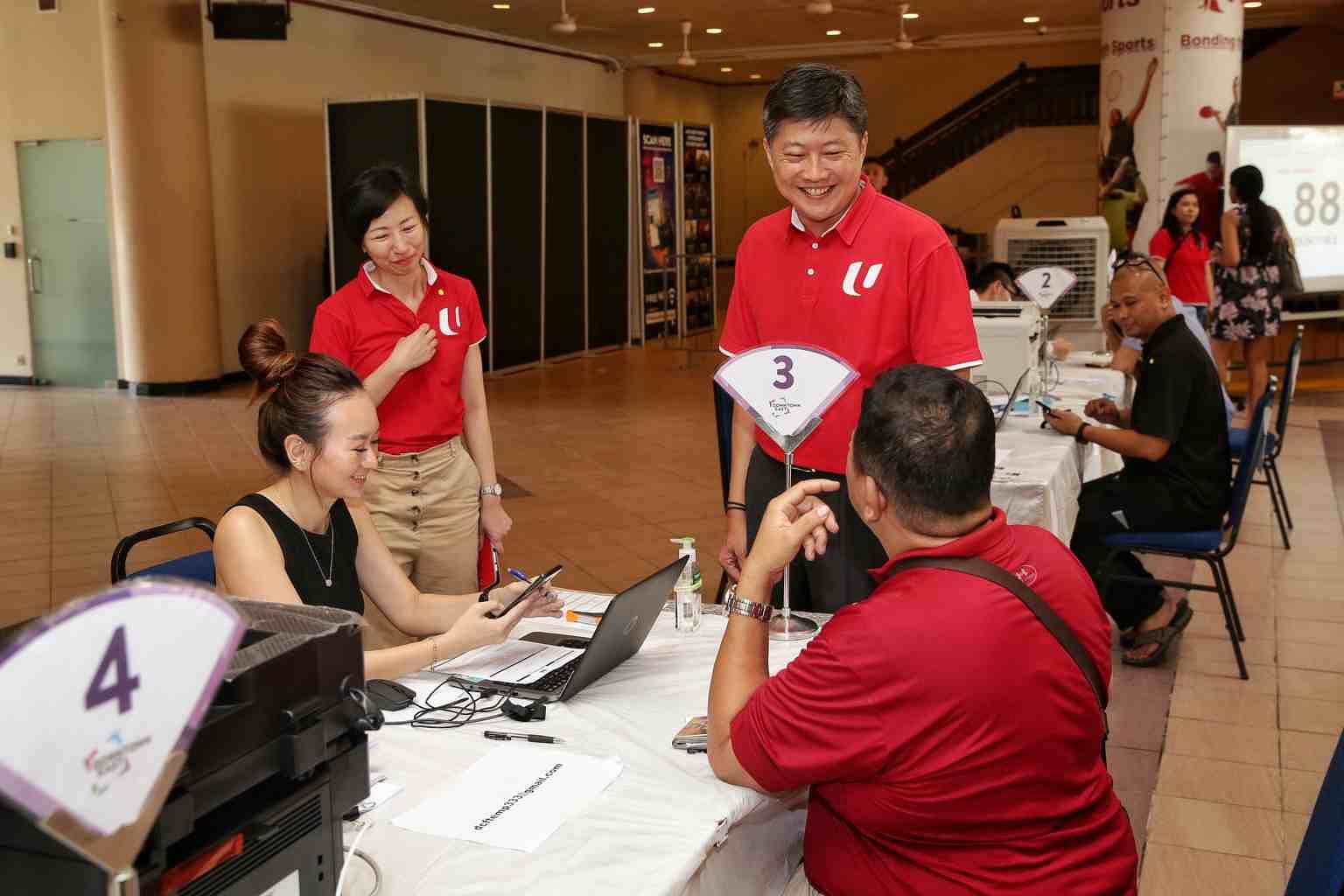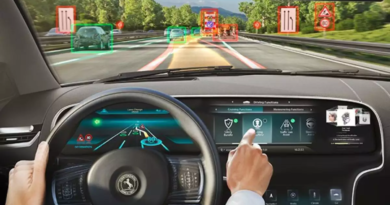Free Taxi Driver Course (4Months)
Taxi Driver:
Brief Job Description
A Taxi Driver is also called Chauffeur, Cab Driver or simply Cabbie. Individuals at this job need to help passengers in commuting from one destination to another in the private hire vehicles within the city.
Personal Attributes
This job requires the individual to drive for long and awkward hours under tiring and demanding physical and city traffic conditions. Individual must be polite and highly dependable with the ability to remain calm and composed under stressful conditions of traffic and demanding customers.

Work effectively in a team:
Elements and Performance Criteria
Effective communication
To be competent, the user/individual on the job must be able to:
PC1. maintain clear communication with colleagues
PC2. work with colleagues
PC3. pass on information to colleagues in line with organisational requirements
PC4.. work in ways that show respect for colleagues
PC5. carry out commitments made to colleagues
PC6. let colleagues know in good time if cannot carry out commitments, explaining the reasons
PC7. identify problems in working with colleagues and take the initiative to solve these problems
PC8. follow the organisations policies and procedures for working with colleagues
PC9. ability to share resources with other members as per priority of tasks
Knowledge and Understanding (KU)
The individual on the job needs to know and understand:
KU1. the organisations policies and procedures for working withcolleagues, role and responsibilities in relation to this
KU2. the importance of effective communication and establishing goodworking relationships with colleagues
KU3. different methods of communication and the circumstances inwhich it is appropriate to use these
KU4. benefits of developing productive working relationships withcolleagues
KU5. the importance of creating an environment of trust and mutualrespect
KU6. whether not meeting commitments, will have implications onindividuals and the organisation
KU7. different types of information that colleagues might need and theimportance of providing this information when it is required
KU8. the importance of problems, from colleagues perspective andhow to provide support, where necessary, to resolve these
Generic Skills (GS)
User/individual on the job needs to know how to:
GS1. complete well written work with attention to detail
GS2. read instructions, guidelines/procedures
GS3. listen effectively and orally communicate information
GS4. make decisions on a suitable course of action or response
GS5. plan and organise work to achieve targets and deadlines
GS6. check that the work meets customer requirements
GS7. deliver consistent and reliable service to customers
GS8. apply problem solving approaches in different situations
GS9. apply balanced judgements to different situations
GS10. apply good attention to detail
GS11. check that the work is complete and free from errors
GS12. get work checked by peers
GS13. work effectively in a team environment

Practice HSE and security related guidelines:
Elements and Performance Criteria
Communicating potential accident points
To be competent, the user/individual on the job must be able to:
PC1. spot and report potential safety issues while driving
PC2. follow rules and regulations laid down by transport authorities
PC3.. follow company policy and rules to avoid safety, health and environmental problems
Cleanliness and hygiene
To be competent, the user/individual on the job must be able to:
PC4.. ensure cleanliness of ambulance
PC5. escalate issues related to cleanliness and hygiene issues to concern department
PC6.. escalate issues related to hazardous material to concerned authority internal and external
Limit damage to people/client and public
To be competent, the user/individual on the job must be able to:
PC7.. take immediate and effective action to limit the danger or damage, without increasing the danger or threat to yourself or others
PC8. follow instructions or guidelines for limiting danger or damage in respect of equipment on board such as oxygen cylinders.
PC9. escalate the issue immediately if you cannot deal effectively with the danger
PC10.. give clear information or instructions to others to allow them to take appropriate action
PC11. record and report details of the danger in line with operator guidelines
PC12. report any difficulties you have keeping to your organizations health and safety instructions or guidelines, giving full and accurate details
PC13.. check the exhaust as per the recommended guideline and ensure the ambulance is meeting the emission norms. in case not get the ambulance retuned/ adjusted.
PC14. get the waste from routine cleaning, changed spare parts etc. disposed off as per environmental norms
Knowledge and Understanding (KU)
The individual on the job needs to know and understand:
KU1. organization’s instructions or guidelines relating to dealing with and reporting safety and emergency issues
KU2. what action you can take, and are authorized to take, to limit danger
KU3. methods of effective and appropriate communication to let others know about the safety, cleanliness and emergency situations
KU4. where and how to get help in dealing with safety and emergency situations
KU5. how to use appropriate equipment and alarm systems to limit danger
KU6. alternate routes in case of natural calamity, road construction work etc.
Generic Skills (GS)
User/individual on the job needs to know how to:
GS1. to effectively communicate the safety, cleanliness and emergency issues
GS2. keep all the safety equipments in an organized manner so that there is no difficulty to find them
GS3. report potential sources of danger
GS4. follow prescribed procedure to address safety and emergency issues
GS5. learn from past mistakes regarding use of safety and emergency issues
GS6. spot safety and cleanliness issues
GS7. assess impact of hazardous material, activity, incident
Assess and ensure road worthiness of the vehicle:
Elements and Performance Criteria
Vehicle road worthiness
To be competent, the user/individual on the job must be able to:
PC1.. check that the vehicle meets basic legal and compliance related requirements as per : the organization guidelines erg rule books of STUs CMVR guidelines from MoRTH and other guidelines issued by Road Transport Authorities like RTOs any other safety, security and environmental guidelines
PC2.. check vehicle service record indicative of any history of technical defects or immediate need for servicing like oil/filter change
PC3.. record any other deviations observed during the trip
Basic technical check before the trip
To be competent, the user/individual on the job must be able to:
PC4.. supervise and ensure all basic technical checks have been carried out as per standard organization check list /procedure
Escalation of technical problem
To be competent, the user/individual on the job must be able to:
PC5.. report actual or possible defects to the senior driver or owner or service supervisor in enough detail so they can diagnose the problem
PC6.. In consultation with owner conclude about the road worthiness of vehicle and if found unfit to decide to use another vehicle.
Knowledge and Understanding (KU)
The individual on the job needs to know and understand:
KU1. companys policies on: road worthiness requirement; basic compliance to technical requirements and standards; safety and hazards
KU2. CMVR guidelines and other specific local regulations
KU3. organization structure
KU4. escalation procedure
Generic Skills (GS)
User/individual on the job needs to know how to:
GS1. Read and understand technical standards of vehicle operation in terms of fuel system and other control systems in vehicle.
GS2. document technical issues pertaining to vehicle
GS3. follow supervisors instructions
GS4. communicate with assistant and other personnel
GS5. when not to use the vehicle due to technical and/or compliance related issues
GS6. how to learn from past mistakes and identify potential problems

Coordinate with control room and reach to the customer pickup point:
Elements and Performance Criteria
Compliance to duty
To be competent, the user/individual on the job must be able to:
PC1.. report to duty on time as per the schedule
PC2.. log into the MCT system when starting the vehicle for the day
PC3.. comply to duty closure procedure on completion of responsibilities for the day
Control room coordination
To be competent, the user/individual on the job must be able to:
PC4.. communicating the status of previous journey completion to the control room
PC5.. continuously contact the control room using MCT for getting details for the pickup passenger on the display screen for next trip based on the current location tracked through in-built GPS
PC6.. intimating the control room post dropping of the passenger at the desired destination
Escalation of problems
To be competent, the user/individual on the job must be able to:
PC7.. inform about the inability to reach to pickup point in case of traffic jams or vehicle breakdown
PC8.. inform about incidents (accidents, break downs etc.) during the day if any and also about minor altercation between passengers / public / officials
Knowledge and Understanding (KU)
The individual on the job needs to know and understand:
KU1. policies on: personnel management, duty reporting procedure and associated MIS compliance
KU2. reporting structure within organization
KU3. control room communication protocol and procedure through MCT
KU4. problem escalation procedure
KU5. route planning information system if any
KU6. route knowledge within each city
KU7. MCT system components and its functioning
KU8. knowledge of vehicle tracking technologies like GPS
Generic Skills (GS)
User/individual on the job needs to know how to:
GS1. fill in complaints pertaining to the vehicle which needs company officers attention
GS2. keep abreast by reading about new policies at an organization level
GS3. execute task, manage schedules, and distribute work-loads amongst peers
GS4. share work load as required
GS5. assist other drivers who require help
GS6. share knowledge with other drivers
Drop the customer safely using the quickest route and collect the applicable fare:
Elements and Performance Criteria
Conformance to standard driving practices
To be competent, the user/individual on the job must be able to:
PC1.. confirm all checks have been carried out for road worthiness of the vehicle
PC2.. confirm all papers and documents including driving license, vehicle documents and documents related to goods etc are available
PC3.. start the vehicle and before moving re confirm all gauges are functioning including MCT and in built navigation system if available
PC4.. after starting but within few meters of moving to check the brakes
PC5.. change gear smoothly and in good time; coordinate the change of gears with steering control and acceleration
PC6.. use the accelerator, steering control and brakes correctly to regulate speed and bring the vehicle to a stop safely
PC7.. coordinate the operation of all controls to manoeuvre the vehicle safely and responsibly in all weather and road conditions in forward gear. In reverse gear to take help of assistant
PC8.. use the windows, wipers, demisters and climate and ventilation controls so that you can see clearly
PC9.. monitor and respond correctly to gauges, warning lights and other aids when driving
PC10.. in case of any malfunctioning or breakdown, to immediately attend to the problem by : – stopping the vehicle at a safe place -carrying out a quick diagnostic check -carrying out minor adjustments or temporary repairs if possible -asking for help in case of major problems by accurately reporting the exact nature of problem so that adequate help is made available at all times while driving to practice good driving habits of gear change, acceleration and braking to ensure obtaining maximum fuel efficiency.
PC11.. check the working of MCT and in-built GPS system
Picking and dropping passenger and fare collection
To be competent, the user/individual on the job must be able to:
PC12.. after reaching the pick- up point, confirm the name with the customer and greet the customer appropriately
PC13.. load the passengers luggage (if any) in the boot of the vehicle
PC14.. offer help for boarding to elderly or differently abled customers
PC15.. start the engine, wearseat belt, ensure that front row passenger also wears the belt.Ensure that all doors are locked. Point out to customer any news papers,magazines,entertainment media available on vehicle
PC16.. check with the passenger about his destination and start the taxi fare meter and show the starting reading to the customer
PC17.. select the destination route of the passenger considering the traffic condition and distance
PC18.. start and adjust air conditioning and ventilation as per customer requirement
PC19.. tune in to radio station channels as per customer choice
PC20.. drive through the selected route without violating any traffic norms
PC21.. If unsure about the route stop and ask for directions from locals
PC22.. avoid unnecessary honking and avoid using high beam lights in city
PC23.. en route, pay toll charges if any, and collect from customer alongwith fare
PC24.. not use mobile phone while driving
PC25.. not indulge in unnecessary talk with customer and specially avoid topics involving politics or communal issues.
PC26.. point out any landmark on the route to an out station customer
PC27.. stop the vehicle and the fare meter and help customers in de-boarding safely taking special care in case of elderly and differently abled
PC28.. collect the fare based on the reading that is displayed on the meter or based on fare prior settled with customer. Fare may be collected in cash or by swiping credit card as the case may be. Be sure to return balance change to customer strictly as per fare calculations
PC29.. not demand any tips but accept thankfully if the customer offers
PC30.. unload the luggage from the boot of vehicle and hand it over to the passenger
PC31.. wish the customer appropriately before parting
Conformance to traffic regulation
To be competent, the user/individual on the job must be able to:
PC32.. observe conformance to state specific traffic regulations such as change lanes safely at appropriate speed and observing traffic conditions overtake other road users legally, safely and by using correct signaling at all times observe the speed and distance in relation to vehicles ahead, behind and on the sides and maintain a safe distance from other vehicles. signal your intentions correctly to other road users within a safe, systematic routine respond appropriately to all permanent and temporary traffic signals, signs and road markings as well as hand signals of traffic policeman. use indicators and arm signals to signal intentions as per the traffic requirements Use the parking light when stationary, where needed select a safe, legal and convenient place to stop; secure the vehicle safely on gradients using hand brakes and wheel choke check for oncoming cyclists, pedestrians and other traffic before opening your door remain calm and composed during difficult situations like traffic jam, accidents and strictly avoid any feud with fellow commuters and other public.
General conduct on the road
To be competent, the user/individual on the job must be able to:
PC33.. Give preference and right of road usage to children, elderly and differently abled. Comply with any related rules, regulations and practices for handling general public issues as well as show consideration towards stray animals
Knowledge and Understanding (KU)
The individual on the job needs to know and understand:
KU1. policies on safe driving practices; system and processes to ensure safe driving
KU2. reporting structure
KU3. problem escalation procedure
KU4. safe driving techniquessuch as avoid over speeding and follow prescribed limits maintain safe distance from other vehicles avoid pot holes, stones, otherstrewn objects in case of bridges and underpasses, observe and avoid driving when water level is above danger mark observe movement of pedestrians to avoid collision observe movement of stray animals to avoid collision
KU5. alternate routes in case of natural calamity, road construction work etc.
KU6. troubleshooting techniques in the event of technical problems like wheel changing by using jack
KU7. traffic regulations
KU8. elements of good driving habits for obtaining fuel efficiency : avoid clutch riding avoid frequent changing of gears avoid frequent braking avoid over speeding avoid idling of engine beyond reasonable limit avoid high idling speed setting in engine ensure there is no brake binding obtain right grade of fuel from authorized outlets only ensure correct quantity of fuel received as per bill
KU9. fare rates applicable within the city
KU10. fare calculation based on the metrics followed i.e. either km or day basis
Generic Skills (GS)
User/individual on the job needs to know how to:
GS1. to communicate effectively in local language and also preferably basic spoken Hindi and basic written English
GS2. communicate information in a format that the passenger is able to interpret
GS3. behave courteously with passenger.
GS4. effectively communicate to control room any damage or repairs required with respect to smooth functioning of vehicle
GS5. seamlessly coordinatewith control room to ensure timely pickup and drop of passenger
GS6. assist other drivers who require help and take help where needed
GS7. coordinate with traffic inspectors,toll operators etc.
GS8. keep oneself updated with the new vehicle technologies and functionalities
GS9. gain knowledge/ experience from driving on of different routes and profile of passengers
GS10. Plan and drive based on traffic and road condition using radio links/navigation aids where available
GS11. Plan safe handling of life and materials as per the exact load being transported
GS12. eg special people groups like children, elderly, differently abled or perishable, hazardous goods
GS13. fitness of vehicle for safe driving
GS14. breakdown condition
GS15. accident and emergency situations and medical emergencies
GS16. assess the problem, evaluate the possible solution(s) and use an optimum /best possible solution(s)
GS17. identify immediate or temporary solutions to resolve delays and crisis situations
GS18. manage children, aged and differently abled individuals
GS19. effective tackling of passengers and public who may be stressed, frustrated, confused, angry or drunken
GS20. build passenger friendly work environment and use customer centric approach to resolve crisis
GS21. resolve conflict while dealing with passenger and public
GS22. how to learn from past mistakes to resolve technical and non-technical problems
Assessment Guidelines
- Criteria for assessment for each Qualification Pack will be created by the Sector Skill Council. Each Element/ Performance Criteria (PC) will be assigned marks proportional to its importance in NOS. SSC will also lay down proportion of marks for Theory and Skills Practical for each Element/ PC.
- The assessment for the theory part will be based on knowledge bank of questions created by the SSC.
- Assessment will be conducted for all compulsory NOS, and where applicable, on the selected elective/option NOS/set of NOS.
- Individual assessment agencies will create unique question papers for theory part for each candidate at each examination/training center (as per assessment criteria below).
- Individual assessment agencies will create unique evaluations for skill practical for every student at each examination/ training center based on these criteria.
- To pass the Qualification Pack assessment, every trainee should score the Recommended Pass % aggregate for the QP.



